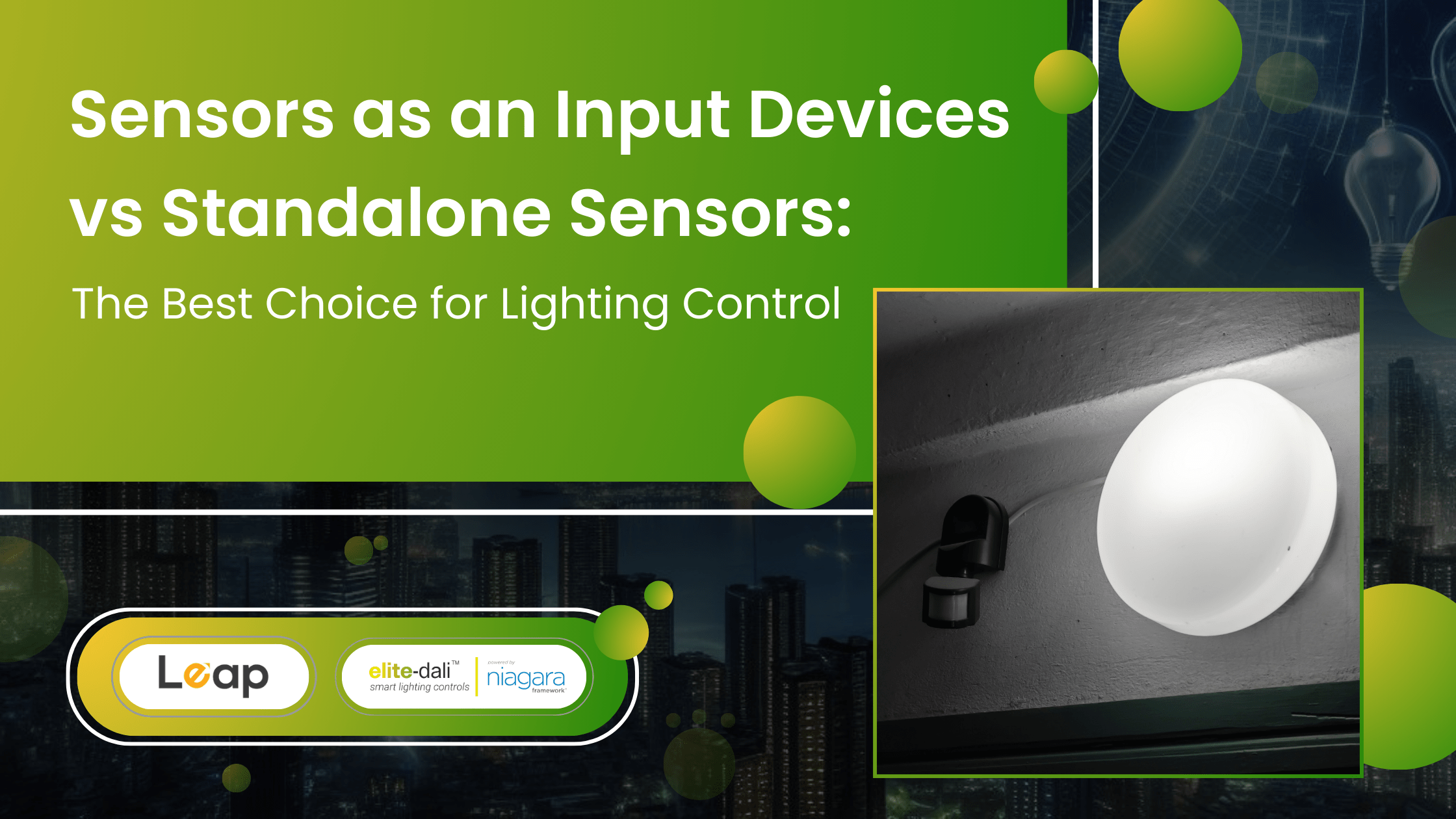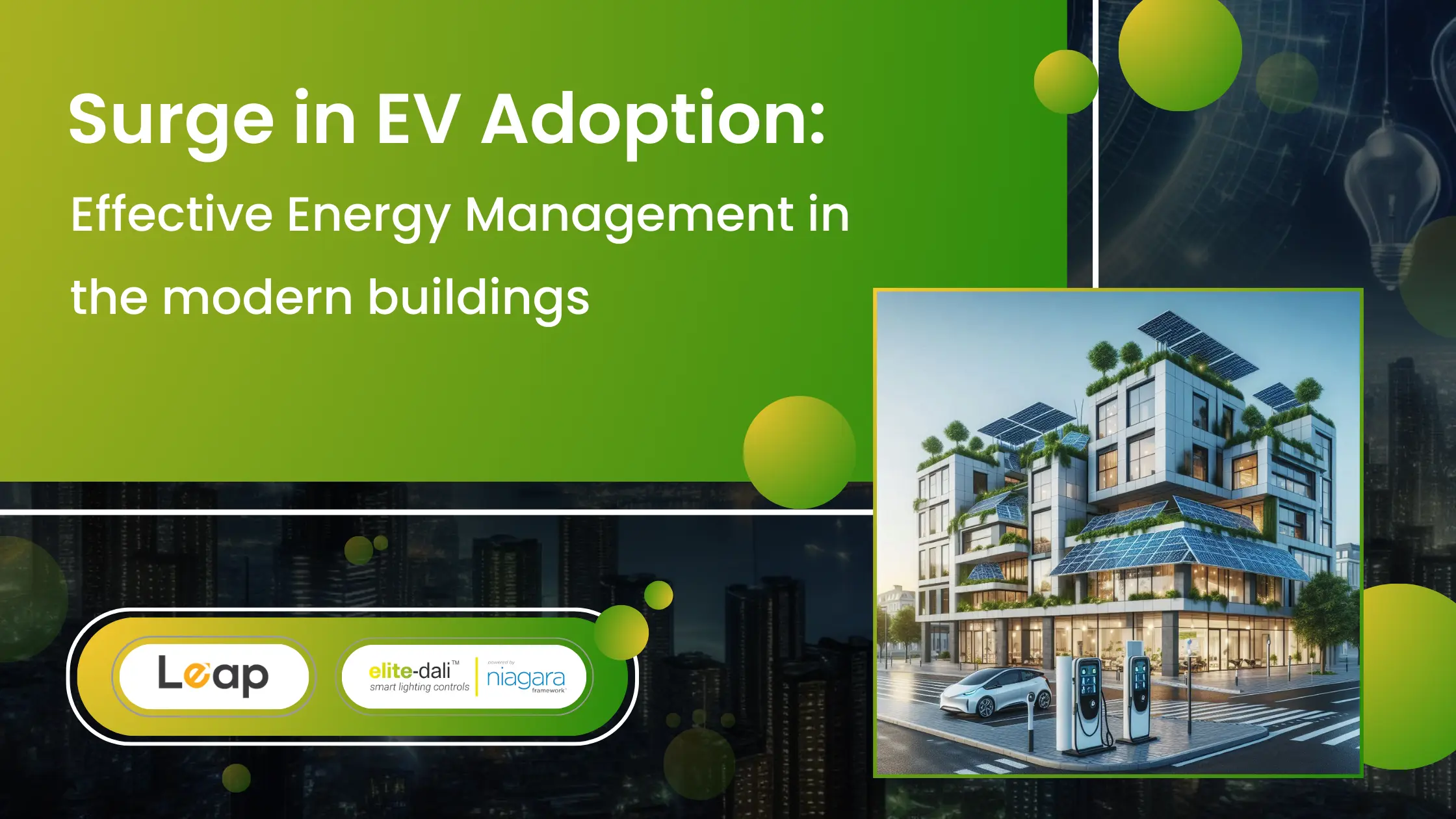Sensors as an Input Devices vs Standalone Sensors: The Best Choice for Lighting Control
When it comes to lighting control and lighting management system (LMS), the choice between using input devices and standalone sensors can greatly influence the efficiency, adaptability, and overall functionality of a system. This blog provides a detailed comparison of the two technologies, emphasizing why input devices are generally the superior choice for modern lighting management in diverse settings, from bustling office spaces to expansive factory floors.
Overview of Technologies
Standalone Sensors:
These are independent units that monitor and react to changes within their immediate environment. Each sensor operates in isolation, typically designed to manage one aspect of lighting control, such as motion detection or ambient light levels. While they might be suitable for smaller areas or less complex environments, they often fall short in larger, dynamic spaces.

Input Devices:
These are components of a larger, interconnected system. They not only detect environmental changes but also communicate with other devices to create a cohesive and comprehensive response across the entire lighting system. This makes them ideal for both high-traffic office spaces and large-scale manufacturing facilities where coordination across vast areas is crucial.

Why Sensors as an Input Devices Are Often the Better Choice
1.Integrated Control and Efficiency:
Using technologies like DALI2 Sensors as an input device offer a level of system integration that standalone sensors cannot. By working as part of a cohesive system, input devices can optimize lighting based on multiple factors simultaneously. For example, they can adjust the brightness in response to both the natural light availability and the occupancy of a room, significantly enhancing energy efficiency. Systems utilizing input devices in large office spaces or factories typically achieve up to 30 to 40% greater energy savings compared to those using standalone sensors.
2.Scalability and Flexibility:
As the needs of office spaces and factories evolve, so too can your lighting system if it uses Sensors as an input devices. These systems are designed to be easily updated and expanded, integrating new technologies such as IoT devices or AI-driven controls without the need for a complete overhaul. In contrast, scaling or upgrading systems with standalone sensors in such expansive environments often requires new installations and can lead to compatibility issues.
3.Cost-Effectiveness Over Time:
Although input devices may require a higher initial investment, the long-term operational savings in large facilities are substantial. By reducing the need for multiple individual sensors and centralizing system management, maintenance becomes simpler and less expensive. Furthermore, the enhanced analytics capabilities of input devices allow for better energy management, further driving down costs across sprawling commercial and industrial spaces.
4.Advanced Data Analytics:
The ability to collect and analyze data from multiple input points allows these devices to not only react to changes but also predict and adjust to future conditions. This predictive capability ensures that lighting systems are always operating at peak efficiency, something standalone sensors cannot achieve due to their limited scope and isolated data.
5.Enhanced User Experience:
Input devices contribute to a more intuitive and responsive environment. They adjust lighting automatically based on real-time data, ensuring optimal lighting conditions that improve comfort and productivity. This seamless integration enhances the overall user experience, a key factor in modern building management, particularly in environments where lighting plays a crucial role in daily operations.
Conclusion
Standalone Sensors has advantage for specific purposes where simple ON/OFF works e.g. Washrooms, spaces which are not regularly used like stores etc. However, embracing input devices in your lighting management strategy marks a pivotal step towards achieving a more sustainable, efficient, and responsive environment. The integration of such advanced technologies not only solves contemporary challenges but also ensures your facilities, whether office spaces or large factories, are equipped for the future.
Ready to illuminate your space with the latest in lighting technology?
Reach out to discover how our cutting-edge solutions can brighten your operations today.







